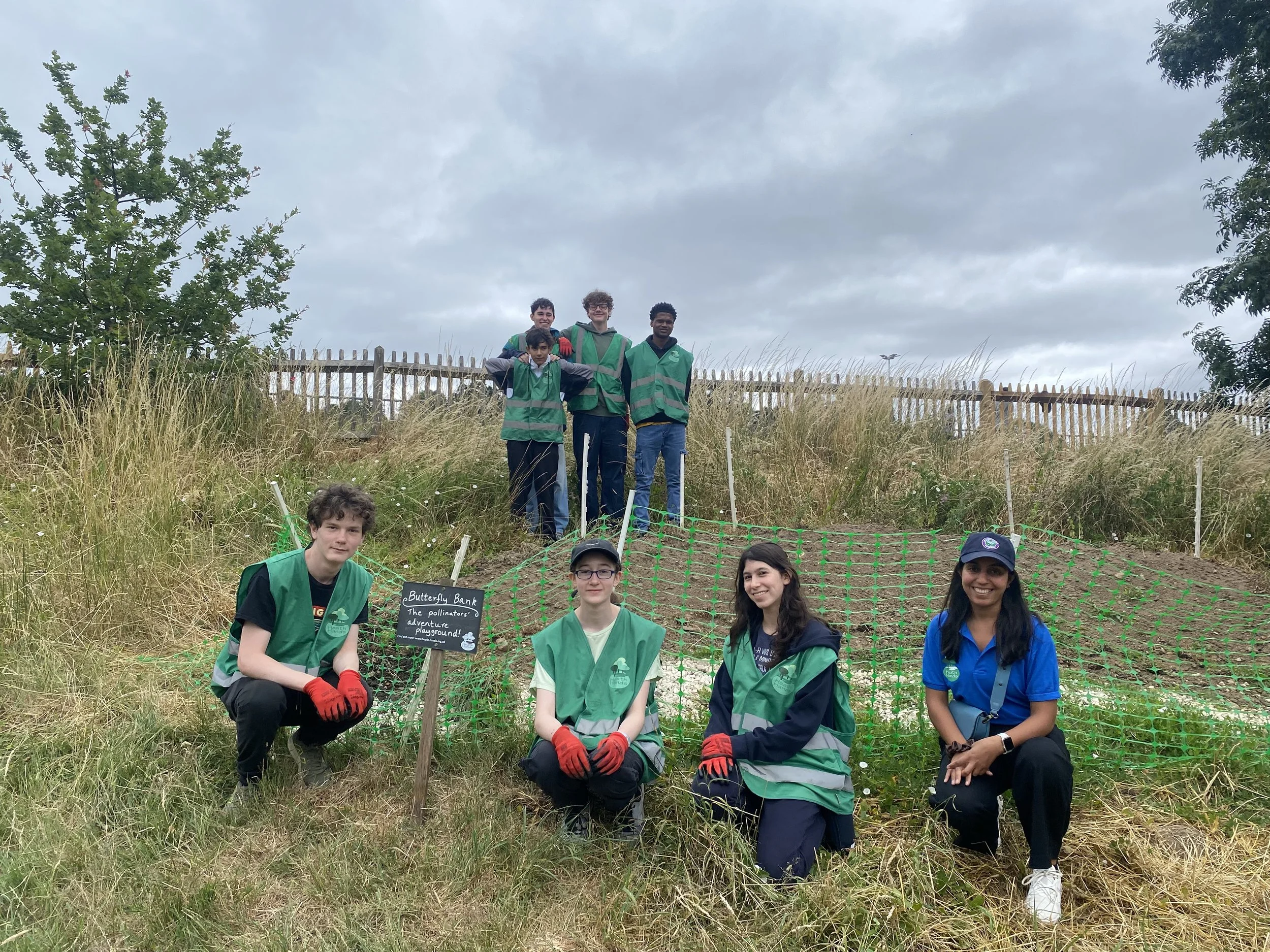Building a Bee and Butterfly Bank
This summer we’ve been collaborating on an exciting new habitat creation project on the Heath - creating a bee and butterfly bank at the Adventure Playground! This work has been done in partnership with the City of London Corporation’s Learning Team and their Green Changemakers Project as part of efforts to provide space for nature at the Adventure Playground and ties in with our wider efforts to boost biodiversity in the Parliament Hill area.
A bee and butterfly bank is an open, sandy mound, located in a sunny spot, that provides a place for sun-loving butterflies and solitary bees to live and breed. The sunlit face offers a warm microclimate that these insects prefer, along with nesting sites for mining bees which dig burrows. It is also planted with specific wildflowers, which offer pollen and nectar, as well as foodplants for butterfly caterpillars. This bank is planted up with some of the Heath’s scarcer butterflies in mind, to boost their populations in the area. This is the first specific bee and butterfly bank created on the Heath.
Bank complete: our youth conservation volunteers finishing the bank with signage and temporary fencing
How we made it
Step 1 - choosing the site: the perfect spot was found on a sunny, south-facing slope on the edge of the playground, and the footprint was laid out, taking care to avoid the nests of Yellow Meadow Ants in the long grass.
Step 2 - turf-stripping: we had to remove the coarse grasses and other plants, otherwise this would grow up through the sand and smother the bank. The long grass was cut and all the dug turf was used on site to start forming the back wall.
Step 3 - building the earth bank: we started building up the mound using clay soil with the Green Changemaker volunteers. This was locally sourced from our pond digging project by the Hive! This crescent of earth acts as a core for the bank and a backing of soil which could be planted up with wildflowers.
Step 4 – building the sand bank: we then added a thick layer of sand to the bank, which was kindly donated and brought over by the Heath’s Conservation Team. The sand was a mix of fine and coarse grains with small stones, making it loose enough for bees to burrow into, but firm enough to keep its shape.
Volunteers building the sand bank
Step 5 – planting and signage.
We planted up the bank with native wildflowers, choosing a mix of species that provide nectar-rich flowers for pollinators (such as Wild Marjoram and Red Clover), and caterpillar foodplants for some of the Heath’s butterflies (Bird’s-foot Trefoil for the Common Blue Butterfly, Common Sorrel for the Small Copper and Common Rockrose for Brown Argus). Our young volunteers got readily stuck in with the planting, including our own Youth Volunteers and groups from Woodcraft Folk. We then added signage to let children know the bank is a pollinator habitat area.
Bank complete with signage
Step 6 - maintenance and observation: the bank continues to be cared for by Heath Hands volunteers and the CoLC Learning Team, keeping the new plantings watered and the sand free of creeping plants.
The bank is already successfully attracting pollinators! We’re thrilled to have seen solitary bees using the bank as a place to forage, bask and nest within days of installing it. We even discovered an active bumblebee nest at one end of the bank, protected by the fencing from accidental disturbance by children. Other bees have been visiting the wildflowers and a species of solitary wasp called a Beewolf was seen perching nearby, another insect which may burrow into the bank. Pleasingly the ant mounds we had to work around seem to be active and growing in the open sunshine. We hope to see the bank buzzing with bees and a-flutter with butterflies next season!
Yellow-legged Mining Bee seen burrowing into the bank
A mining bee’s nest hole in the bank.
Families can visit the bee bank but please don’t walk on it since you may damage the habitat. Those of you without children can see the bee bank from the footpath behind the running track. You can support our projects to create more habitat for pollinators via our wildflower meadow appeal and help us provide homes for other special species on the Heath by adopting a wildlife home.





